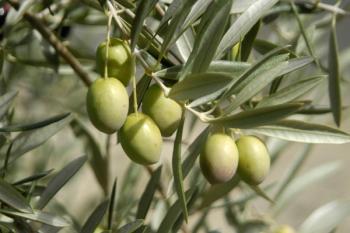
What is raw cannabis?
Raw cannabis is distinctly different from both the cannabinoids tetrahydrocannabinol (THC) and cannabidiol (CBD).
You’ve probably heard about the latest craze in cannabis: CBD, or cannabidiol. But what about raw cannabis? Raw cannabis is distinctly different from both the cannabinoids tetrahydrocannabinol (THC) and CBD. While all three come from the Cannabis sativa plant, they each boast their own unique characteristics that produce different effects on the human body.
So what exactly is raw cannabis? Simply put, it is unheated, or “non-activated,” cannabis. This means that it has not been through a process called decarboxylation, which is really just a fancy way of noting that the compound has undergone a chemical process as a result of heating over time.
Raw cannabis not only contains fiber, calcium, and iron, but also contains over 100 cannabinoids. It includes both of the raw counterparts of THC and CBD, tetrahydrocannabinolic acid (THCA) and cannabidiolic acid (CBDA). But, because these compounds are inactivated or unheated, raw cannabis is not psychoactive. It should be noted that, while the decarboxylation or activation process does require heat to occur, this can also happen as a result of sunlight exposure or even room-temperature storage over time. The amount of THCA or CBDA that is converted through activation depends largely on the type of heat process applied and the duration of time.
Raw cannabis and CBD, both finding their origins in the hemp plant, are not classified as Schedule I substances like marijuana. The
Why Incorporate Raw Cannabis?
Raw plants, in general, retain more of their nutrients in contrast to their cooked counterparts. This same concept applies to raw cannabis as well, even beyond the benefits of the cannabinoids.
Cannabis is a powerhouse of a plant and, in its raw form, is actually one of the most nutritionally complete food sources on our planet. It has nutritious compounds such as omega fatty acids, minerals like calcium and iron, and an abundance of vitamins, including vitamin A, B1, B2, C, and E. Raw cannabis also boasts complete proteins, which means the proteins found in cannabis provide all essential forms of amino acids.
This doesn’t necessarily mean you would want to entirely replace CBD (which is heated) with CDBA in your diet. While certain nutrients are destroyed by heat and are better absorbed through raw plants, other enzymes are more bioavailable through their cooked counterparts.
Basically, it’s all about balance.
Where Is Raw Cannabis Sourced ?
Raw cannabis can be difficult to come by. The most straightforward way to source it is actually to grow your own, which is unfortunately not an option for everyone. One tip: Ensuring the plant doesn’t dry out helps maximize the raw cannabis benefits. One should check with state and local laws as to whether a home-grown cannabis project is lawful under applicable regulations. Another option is to look for CBD products containing raw cannabinoids. As the legal landscape on cannabis shifts, it should become easier for folks nationwide to include raw cannabis into their daily diets.
How Is Raw Cannabis Used?
Juicing is one of the most common ways people choose to start building raw cannabis into their diet. One should select a masticating or cold-pressed juicer to ensure the cannabis remains raw. Masticating juicers utilize a slow crushing and squeezing process to extract juice from the raw plant. Unlike centrifugal juicers, masticating juicers do not produce heat, eliminating the chance of converting raw cannabinoids into their activated counterparts during the preparation process.
Another way to incorporate raw cannabis is through green smoothies and salads. It’s easy to toss in the blender with your favorite green smoothie recipe, or as an additional topping on your salad. For instance, one could sprinkle raw cannabis trim or drizzle a full-spectrum hemp extract oil that contains CBDA on top of a veggie mix.
Olivia Snider is a writer at Bluebird Botanicals. Bluebird Botanicals retails a
Newsletter
From ingredient science to consumer trends, get the intel you need to stay competitive in the nutrition space—subscribe now to Nutritional Outlook.





